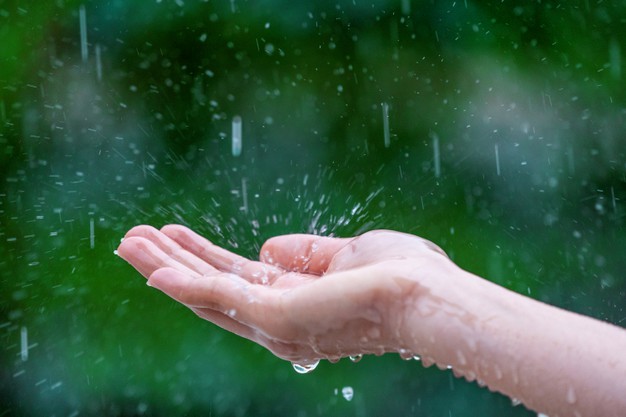

What is a rainwater harvesting system?
We might not have come across the term Rainwater harvesting daily. But the name gives away what it means. In simple terms, Rainwater harvesting is a technique to collect rainwater and store it for later use.
“Rainwater is the purest form of water” haven’t we all learned this fact when we were at school? Though, with the increase of pollution levels in the atmosphere, even the rainwater is polluted to some extent, making it unfit to drink directly. But, apart from that, a significant amount of dependence on the water can be shifted from freshwater (sourced from underground water, rivers, or lakes) to rainwater. In cities and villages where there is a shortage of water supply, rainwater harvesting can be used to solve this issue. With the underground water table depletion and rivers drying, rainwater harvesting seems like a viable option.
Many countries such as Australia and Germany have made rainwater harvesting a norm. Not only does rainwater harvesting help supply water to farms, but the technique is also applicable for households and businesses.
Rainwater harvesting is an apt innovation for water supply in urban settings. All that is required to use this resource is to collect the free water falling on your rooftop and direct it to a water-collecting cistern. By doing this, you can control your water supply and supplant all or at least a significant amount of your water needs. Rainwater harvesting framework can supply your entire household and landscape water needs.
India’s Water Scenario
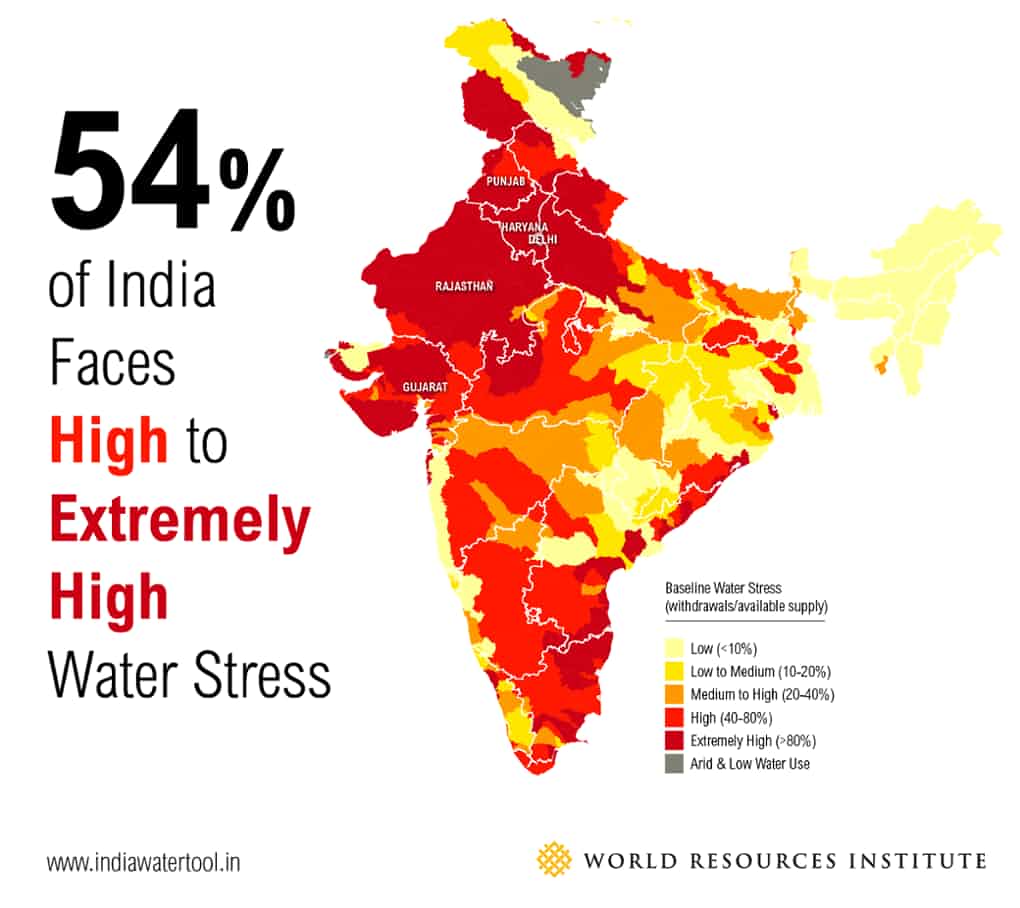

India depends almost completely upon the annual monsoon and is currently facing a severe water crisis. Throughout the country, the underground water resources and the surface water resources are not equally distributed. In addition, 54% of India faces high to extremely high water stress. The above map shows the groundwater situation. With our negligence, we have polluted the water resources that are available to us. The situation is grave indeed and rainwater harvesting is the way out of this crisis.
Why is Rainwater harvesting important?
Rainwater harvesting
The assortment of rainwater in an appropriate manner can be a perpetual solution for the issue of the water crisis in various parts of the world. This basic technique is a solution that will be serviceable in regions where there is adequate rain yet the groundwater and surface water resources are insufficient.
Hilly regions
In hilly regions, human, animal, and farming water requirements can be met through rainwater harvesting. Surface pollution is comparatively lower in remote hilly areas. Hence, this makes rainwater harvesting ideal.
Deficiency of water
Albeit the earth is three-fourths water. But only 0.3% of it is appropriate for human utilization or farming. Rainfall is capricious and there is a steady deficiency of water in nations that are dependent on agriculture or are drought-prone.
Inadequate monsoon
It implies a low harvest yield and deficiency of food. Indeed, even animals experience the ill effects of a shortage of water. Africa and the Indian subcontinent face intense water scarcity throughout the late spring months. The ranchers are the most affected as they don't get adequate water for their fields. Therefore, Rainwater harvesting is an optimal answer for ranchers who rely upon rain for water supply.
Inaccessibility of clean water
It forces the utilization of contaminated water. In addition, bringing about water-borne diseases and a high rate of infant mortality.
Irrigation with minimum technology
On the off chance that rainwater, which comes free, can be gathered and stocked, rather than allowing it to run off, can serve as an alternative to back up the principal water supply particularly during droughts. Methodical rainwater harvesting can help with irrigation with minimum utilization of technology and is consequently practical. This straightforward technique can assist farmers with keeping their harvests from drying because of the absence of water.
Replenishes groundwater
Rainwater harvesting is significant because it depends on the fact that it can be stored for future use. Likewise, ground-level water renews and improves its quality. Hence, this will help with raising the level of ground watermarking it accessible. In addition, when stored in ground-level wells and tube wells, it prevents them from running dry. This enhances soil fertility. Harvesting rainwater also decreases soil erosion by keeping the surface runoff of water under check.
Sparse and unpredictable rainfall
In regions having sparse and unpredictable rainfall, shortage of water is a diligent issue. It can't be settled yet can be relieved through rainwater harvesting. Albeit, rainwater harvesting is an optimal solution for water crises in locales that get inconsistent rainfall.
Easiest Rainwater harvesting model:
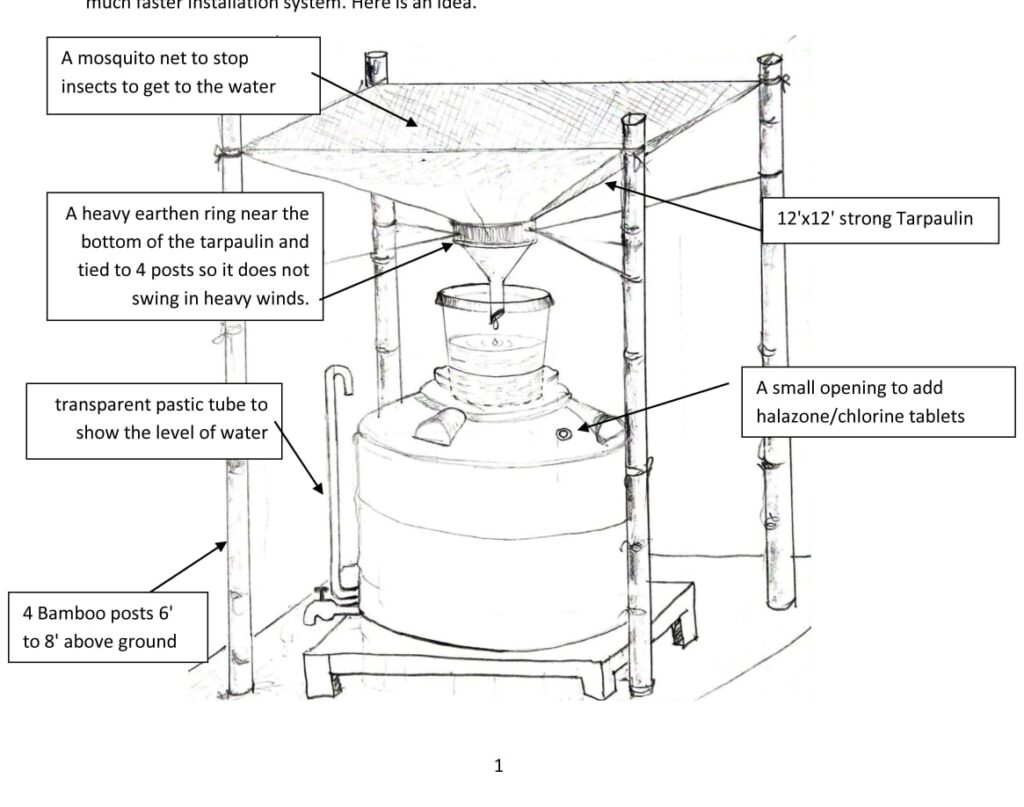

This simplified mechanism is designed by Suprio, a water expert from Kolkata. He provides clean water solutions to rural and urban slums. Check out his work here.
- A mosquito net to stop insects from getting to the water. The net placed on top of the funnel filters any solid, contaminated particles, insects, and reptiles from getting inside the cistern.
- 12’*12’ strong tarpaulin gathers and directs the water towards the funnel.
- A heavy earthen ring near the bottom of the tarpaulin and tied to 4 bamboo posts 6’ to 8’ above the ground so it doesn't swing in heavy wind.
- A small opening on the cistern to add halazone/ chlorine tablets to purify the water.
- A transparent plastic tube to indicate the level of water.
Other collection methods.
Rain barrels
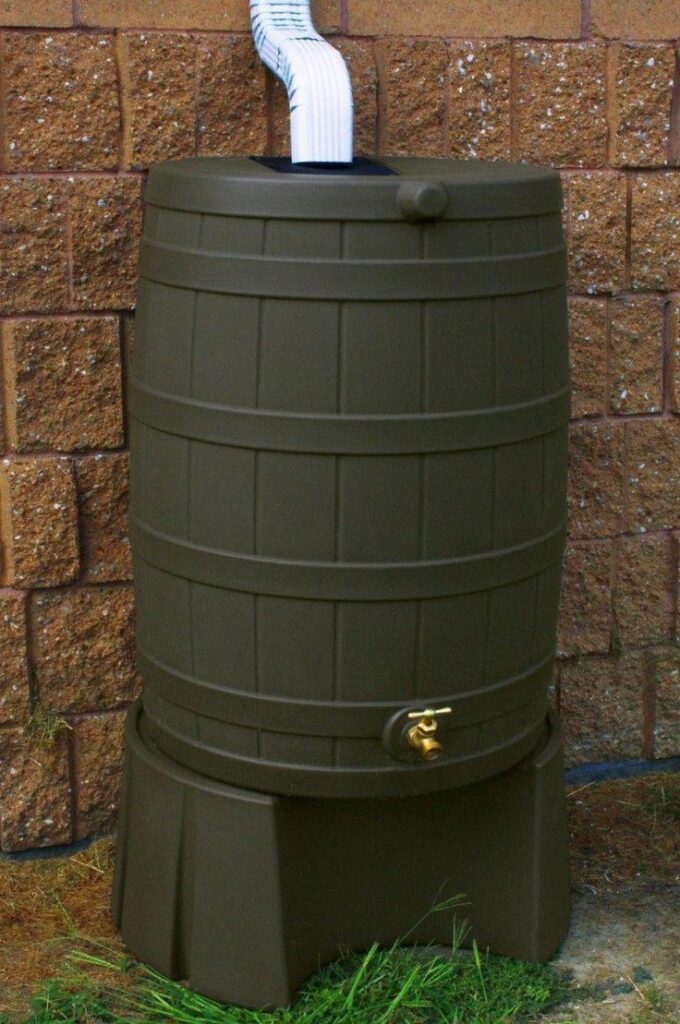

This is the most common and popular method. This simply involves installing a barrel at the end of the pipeline to collect the rooftop water. In addition, you could use a recycled barrel instead of buying a new one.
Pros:
- Easily implemented by anyone at any house.
- Barrels are readily available at various stores & websites.
- Barrels are compact so they can fit into any situation.
Cons:
- Capacity is less. Only 50 to 100 gallons.
- Easily overflows and wastes collection opportunities.
“Dry” system
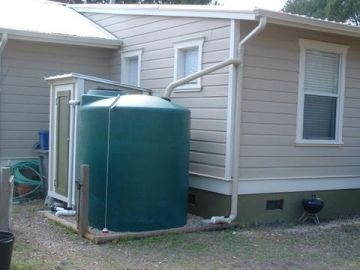

It is a variant of the previous method but this stores water in a larger storage volume. The entire collection of rainwater empties directly at the top of the tank.
Pros:
- Stores rainwater in a large quantity.
- Great for climates with infrequent rainfall.
- Maybe inexpensive to implement.
- Maintenance is easier as the system is less complicated.
Cons:
- You need to install the storage tank next to your house.
Wet system


This method requires locating the collection pipes underground to collect from multiple downspouts. The rainwater will fill the underground pipes which will lead to water rising in the vertical pipes until it spills into the tank. The collecting pipes should have water-tight connections.
Pros:
- The ability to collect from your entire collection surface
- The tank can be located away from your house
Cons:
- Expensive to implement due to underground piping
- Enough distance between gutters and tank inlet should be available
Conclusion:-
“Water water everywhere, not a drop to drink” currently 17% of Indian cities and towns are facing water shortage. People in Chennai are lining up to get themselves water to go about the day. People of Rajasthan and Gujarat are walking miles and carrying water on their heads. In conclusion, we need to do our part to prevent this scarcity. We have exploited and wasted water at our convenience. It’s time we do the needful and do it sustainably.
If you found this article helpful, we suggest you read 5-Step Guide To a Digital Declutter






